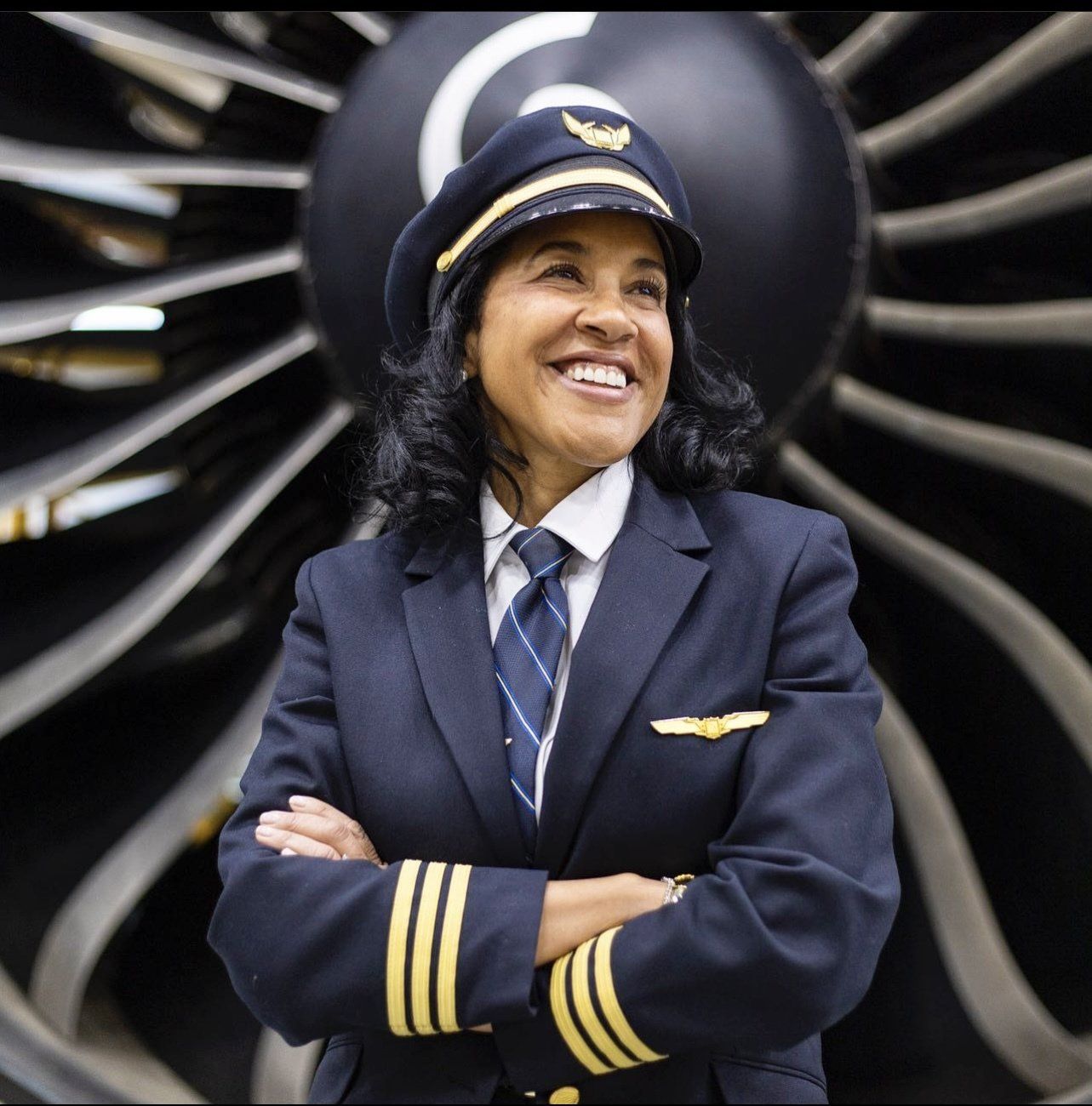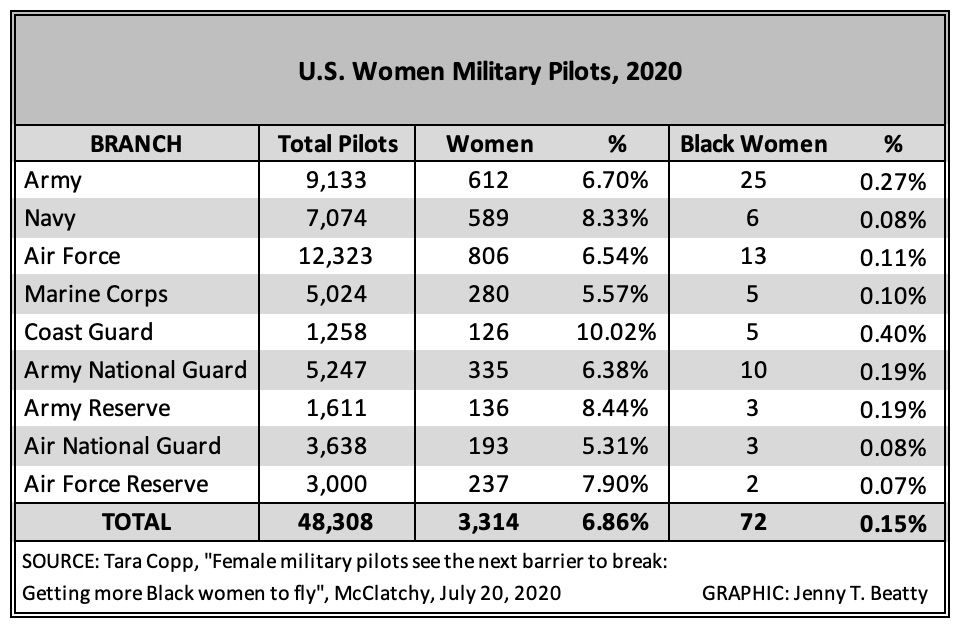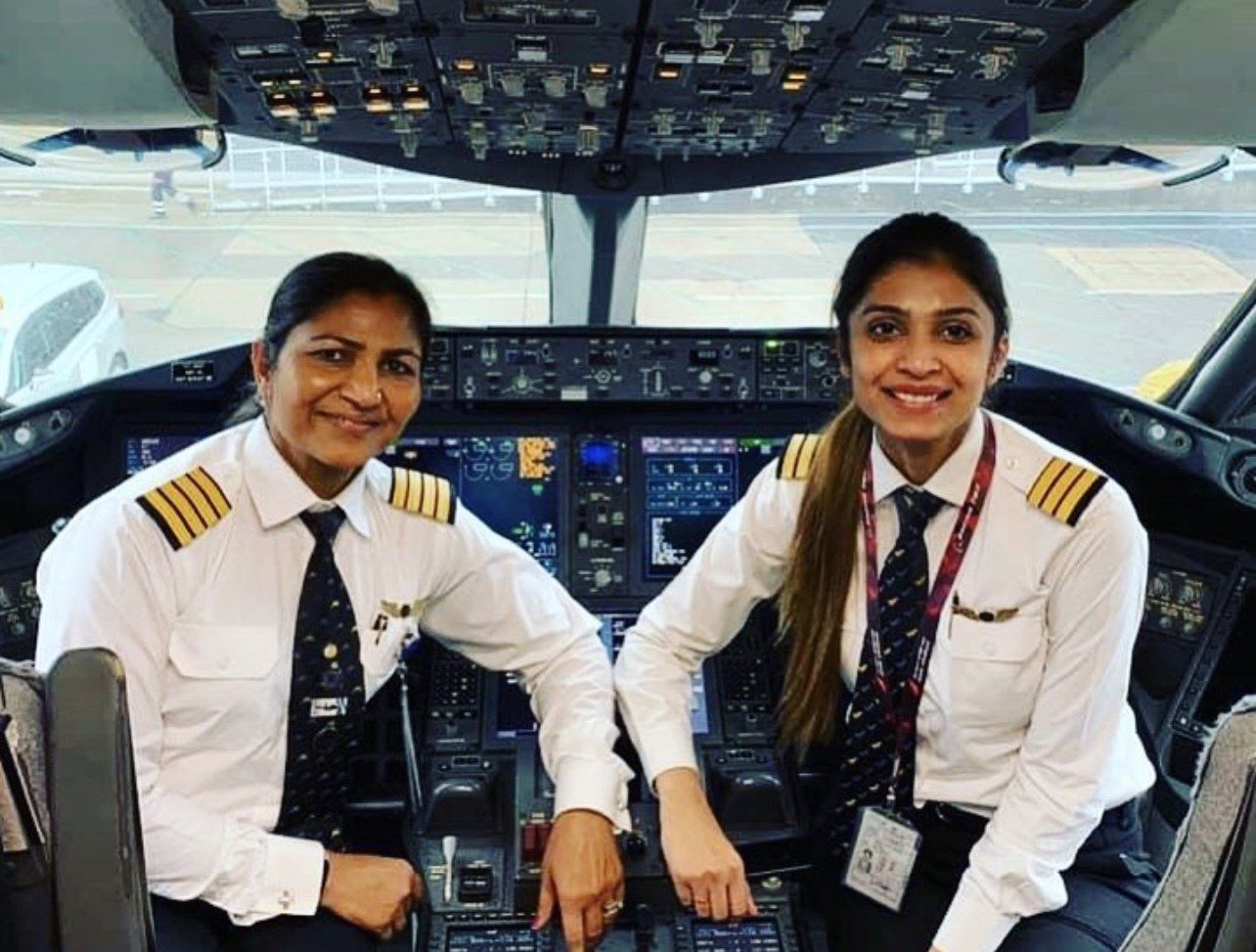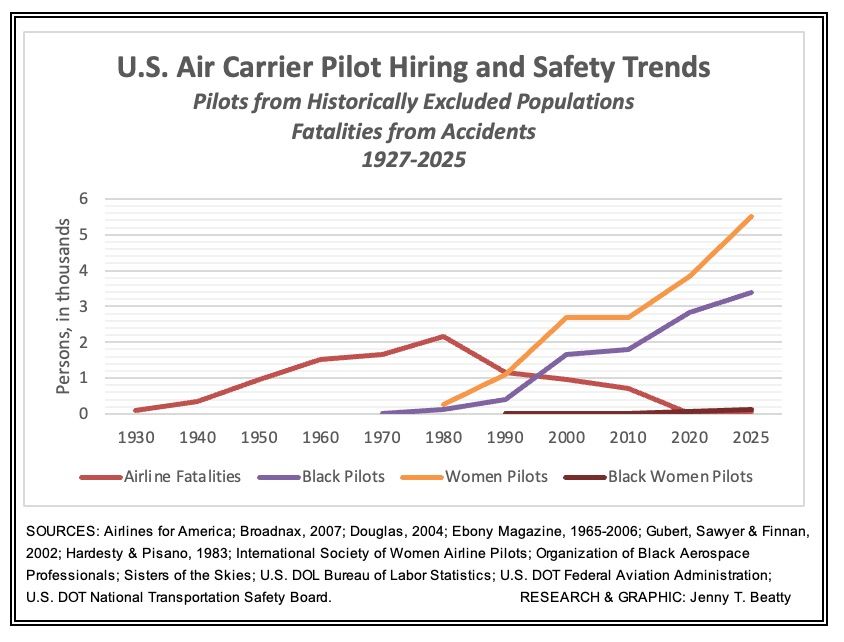New Paragraph
New Paragraph
New Paragraph
STATISTICS
Gender of U.S. Pilots
10.8%
Student Pilots
91,694 women hold student pilot certificates
9%
Flight Instructors
12,450 women are active certificated flight instructors (CFIs)
5.8%
Airline Pilots
Estimated percentage of women pilots flying for U.S. passenger and cargo airlines
7.2%
Total Pilots
36, 493 women are active rated pilots, out of a total half-million (excludes student and remote pilots)
Sources: U.S. DOT FAA 2024; Intl Society of Women Airline Pilots 2021
PROGRESS?
NO SIGNIFICANT CHANGE
in the representation of women over time
Over the last six decades, the total number of women pilots has increased, however women flight instructors, commercial pilots, and airline transport pilots have increased at a rate at or below 1% per decade.
This is of great concern, given that these are the pipeline to the professional pilot workforce.
The evidence is overwhelming: Real change in the representation and advancement of women in aviation requires culture change.
KEY FACTORS
contributing to underrepresentation
- Negative workplace culture to include implicit bias, discrimination, and sexual harassment
- Challenging work/life/family balance
- Lack of women in leadership positions
- Need for leadership commitment to diversity and inclusion
- Need for increased youth outreach
Source: Lutte, "Women in Aviation: A Workforce Report", 2021
Race / Ethnicity of U.S. Professional Pilots
An estimate among all professional pilots working in
charter, air ambulance, air tour, corporate, flight instruction, air cargo, and airline operations
0.1%
Black Women Pilots
2.7%
Asian Pilots
4.4%
Black Pilots
8.3%
Latino / Hispanic Pilots
who may identify as white or Black or another race
Sources: U.S. DOL BLS 2024; Sisters of the Skies 2025

Photo courtesy of Carole Hopson
Gender of US Military Pilots

MILESTONES
- 1942: The Women's Auxiliary Ferrying Squadron (WAFS) and the Women's Flying Training Detachment (WFTD) form and then merge into the Women Airforce Service Pilots (WASP), an organization of civilian women pilots attached to the US Army Air Forces that is active until 1944. Of the 1074 women pilots to complete WASP training, most are white with a very few of Chinese, Hispanic, and Native American ethnicity; Black women are excluded.
- 1948: US Armed Forces lifts racial segregation
- 1973: Army & Navy open pilot training to women
- 1976: Air Force opens pilot training to women
- 1976: Military Service Academies open enrollment to women
- 1977: Coast Guard opens pilot training to women
- 1977: WASP pilots granted veteran status for their wartime service
- 1979: Army’s first Black woman pilot
- 1982: Air Force’s first Black woman pilot
- 1991: Air Force / NASA's first woman crewmember on the supersonic SR-71 Blackbird
- 1993: US Armed Forces lifts ban on women serving in combat roles
- 1993: Marine Corps opens pilot training to women
- 1999: Air Force’s first Black woman fighter pilot
- 2001: Marines’ first Black woman pilot
- 2005: Air Force’s first Black woman pilot of the U-2 Dragon Lady spy plane
- 2005: Coast Guard’s first Black woman pilot
- 2005: Air Force Thunderbirds’ first woman pilot team member
- 2011: US Armed Forces lifts ban on LGBTQ service members serving openly
- 2020: Navy’s first Black woman fighter pilot
- 2022: Navy Blue Angels’ first woman pilot team member
Gender of the World's Airline Pilots

Photo courtesy of Nivedita Bhasin
5.8%
Estimated percentage of women pilots flying for passenger and cargo airlines worldwide
Nations with the
highest percentage of women
INDIA - 12.4%
Ireland - 9.9%
South Africa - 9.8%
Australia - 7.5%
Selected nations,
percentage of women
Canada - 7.0%
Germany - 6.9%
USA - 5.5%
Source: Intl Society of Women Airline Pilots 2021, 2023
MILESTONES
- 1934: Helen Richey becomes the first woman airline pilot in the United States and the world when she is hired by Central Airlines. The U.S. Commerce Dept. advises against scheduling her to fly in inclement weather, and the male airline pilots refuse to admit her into their union, so she resigns after eight months.
- 1956: Indian Airlines hires the first woman airline pilot in Asia
- 1961: Scandinavian Air hires the first woman airline pilot in Europe
- 1973: Frontier Airlines hires the first woman airline pilot in the United States in modern times
- 1973: Transair hires the first woman airline pilot in Canada
- 1978: Texas International hires the first Black woman airline pilot in the United States
- 1978: Air Illinois has the first flight with an all-woman airline crew in the world
- 1980: Seaboard World Airlines has the first woman airline pilot of the Boeing 747
- 1993: British Airways has the first woman airline pilot of the Aérospatiale/BAC Concorde
- 2009: Atlantic Southeast Airlines has the first flight with an all-Black woman airline crew in the world
U.S. Air Carrier Pilot Hiring and Safety Trends
U.S. Air Carrier Pilot Hiring and Safety Trends

Is airline safety linked to diversity? Let’s check the facts.
Passengers, air mail, and freight have been flown in scheduled air carrier operations since the earliest days of aviation. Accidents were common, and records of U.S. scheduled air carrier accidents date back to 1927.
For the first six decades of scheduled airline travel, U.S. air carriers excluded pilots from certain populations from hiring, and the profession is currently estimated to be about 92 percent white and 95 percent male.
Airline safety has seen significant improvement in modern times, with an overall reduction in accidents. While rare, accidents with fatalities still occur. Thorough investigations to determine causal factors and a relentless focus on improvements to aircraft design, pilot training, and crew standardization, and other risk mitigation and safety enhancement initiatives, remain industry-wide priorities.
The trend of an
INCREASE in hiring pilots from historically excluded populations coincides with a
DECREASE in fatalities from airline accidents. There is no evidence of a cause-and-effect relationship between these trends.
Read the full article here.